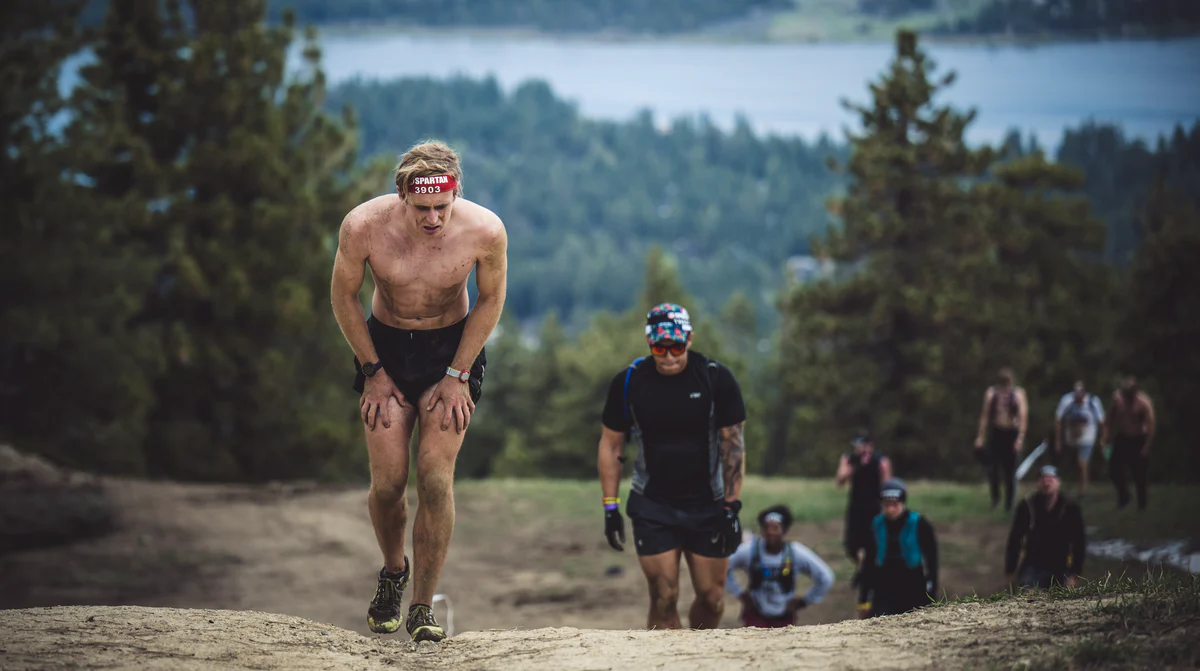4 Ways to Safely Acclimate and Race Faster at Altitude

For most endurance athletes and fitness enthusiasts, a three-mile run can often feel like a piece of cake. This is, of course, until it ascends into the stratosphere. A high-altitude race is a completely different beast than a sea-level run. Here's everything you need to know to properly acclimate and race at altitude.
No matter where you are – sea level or the mountains – the gasses in the air exert a certain barometric pressure on your body, to which you become accustomed. As you leave your comfort zone and go higher in altitude, that pressure decreases as the air becomes thinner.
“This means less oxygen for the exercising muscles and a lowered capacity for aerobic exercise,” Jeff Godin, Ph.D., says. “The deficiency of oxygen reaching the tissues is called hypoxia.”
Your body, being the insightful machine that it is, tries to counter the hypoxia by breathing harder and more frequently per minute. “This higher volume of ventilation increases the alkalinity of the blood, which makes it easier for oxygen to bind to hemoglobin, improving blood oxygen saturation levels,” Godin explains.
Sounds good, right? Nope.
“Over the ensuing days, the kidneys begin to release sodium bicarbonate to offset the alkalosis,” he says. “This then leads to higher urine production, greater than normal fluid losses, and – consequently – a reduced plasma volume and a further reduction in the capacity to carry oxygen to the muscles.”
Your body also calls on your heart to beat faster to more efficiently shuttle oxygen. As a result, you can expect your heart rate to be 10-20% higher than normal, and the activity will feel much more difficult than at sea level.
“Your VO2 max – your maximal ability to utilize oxygen – also drops the higher you get above sea level, decreasing 3% for every 1,000 feet of altitude above 5,000 feet," Godin says. "So, for a race that starts at 9,000 feet, you can expect at least a 12% reduction in your aerobic exercise potential.”
All that being said, racing at altitude is not an insurmountable task, as long as you know what to expect and prepare for it. Here are Godin’s top plan-ahead tips for competitive success at altitude.
How to Train for and Race at Altitude
1. Hydrate, and Then Hydrate Some More
Since the air at higher altitude is drier, you’re going to experience a higher rate of evaporation, both from your skin and through breathing.
“This is called ‘insensible sweat loss’ because we literally don’t know it’s happening,” Godin says. “There is little or no accumulation of sweat on the skin or clothing, and a higher urine output may lead you to believe you are adequately hydrated.”
Invest in a hydration pack that has at least a one-liter bladder and several easily accessible pockets. Take in at least 7 to 10 ounces of fluid every 10 to 20 minutes (and more if you’re a larger person, if it’s hot out, or the race intensity is high). And don’t forget your electrolytes.
“For every 34 ounces of fluid you drink, you should take in between 800 and 1,000 milligrams of sodium,” Godin explains.
2. Brace for Mother Nature
Stash one or two extra layers of clothing in your pack or on your person.
“Air temperature decreases approximately 1 degree Celsius for every 500 feet of ascent,” Godin says. “That change will be even more noticeable if there is wind or precipitation, and the weather in the mountains is often unpredictable.”
If rain is forecast or you will be getting wet, Godin recommends a windbreaker.
“Being wet in a cold environment with exposure to the wind is a recipe for hypothermia,” Godin says.
Though it might be chillier, you’re actually at a higher risk for sunburn at altitude: Thin air absorbs less solar radiation, which means greater exposure to harmful UV rays. Wear SPF clothing, or lather up with a zinc- or mineral-based sunscreen with at least 30 SPF, and reapply frequently.
3. Carb Load All Day Long
On race day, carry some form of carbohydrate in your pack or pocket.
“At elevation, your body prefers carbohydrates as its primary fuel, since it requires less oxygen to be metabolized, as compared to fat,” Godin, who recommends about 60 grams of carbs every hour via a sports drink, Clif Block, or dried fruit, says. “It should be easily digestible since you will need it immediately.”
4. Acclimate Properly
If you’re a serious racer who frequently competes at altitude, consider spending more time at the race location.
"When the body is exposed to altitude over a period of days or weeks, it gradually adapts to the lower oxygen pressure,” Godin says. “Normally it takes a full three weeks for full acclimatization to take place, even at moderate altitude. Within a week plasma volume will be restored back to pre-altitude levels and the body will begin to produce more red blood cells.”
If you’re not able to spend more than a week at altitude, then plan to arrive at the race venue either the day before or the day of.
“The first week of acclimatization is a step backward,” reminds Godin. “Expect that your performance will be compromised, and be prepared to race a little slower than you would at sea level.”
The silver lining: “Racing slower,” he says, “just means you get to spend more time in nature.”

